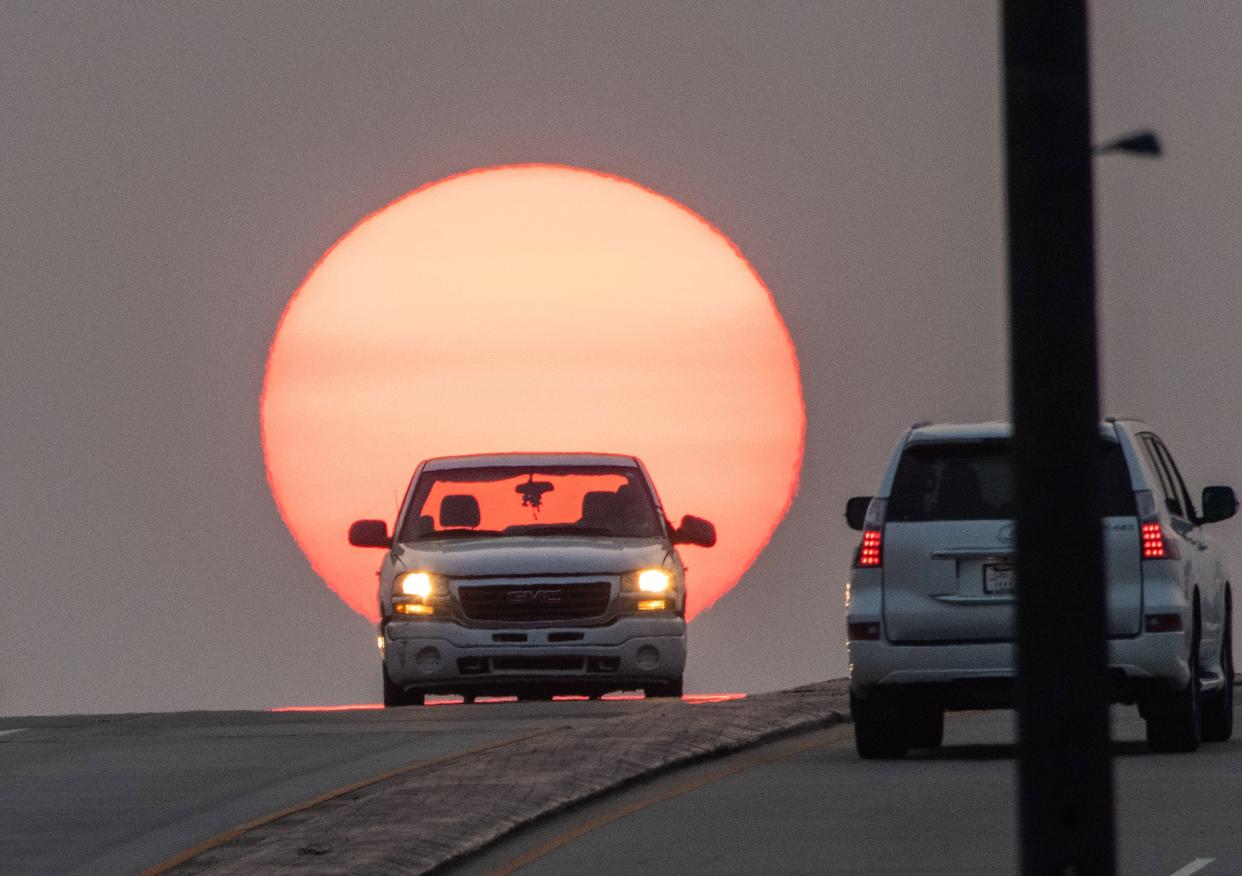Backyard Universe: Dwindling daylight and Jupiter in the evening

Everyone knows about the abrupt, one-hour-by-the-clock change in sunset times with the resulting early darkness when we switch back to standard time in early November.
But a more gradual loss of daylight is happening right now.
Between Sept. 1 and the end of the month, we lose an hour of daylight. We lose a little more than an hour in October. This slow loss of daylight is leading up to the shortest daylight period of the year — the winter solstice on Dec. 21 — when our Fayetteville daylight period is a short nine hours and 48 minutes.
September also brings the autumnal equinox on Sept. 22 which signals the start of fall in the northern hemisphere and spring south of the equator.
Equinox means “equal night” and on the equinox daytime and nighttime hours are supposedly equal in length.
Backyard Universe: Want a good view of ringed Saturn in the evening? See it in mid-August
Only they’re not.
A check of sunrise and sunset times for Fayetteville on Sept. 22 shows a 7:03 a.m. sunrise time with sunset at 7:14 p.m. so the two events are not exactly 12 hours apart.
We have to wait until Sept. 27 before we have almost exactly 12 hours between sunrise and sunset. On that day, sunrise comes at 7:07 a.m. with sunset at 7:06 p.m. The moment of sunrise is the time when the upper edge of the sun breaks the horizon.
The problem is our atmosphere, which has a lens effect when the sun is on or near the horizon. The atmosphere bends the sunlight and tends to “lift” the sun higher above the horizon than it should be. The same effect slows the sunset as the sun appears a smidgen higher than it should be before finally setting.
The length of a Fayetteville day on that “most equal day,” Sept. 27, is 11 hours 59 minutes. That date is called the “equilux” and it varies by latitude of the location where the sunrise and sunset occurs.
The spring and fall equinoxes are also the only times that the sun rises exactly in the east and sets exactly west.
Backyard Universe: All major planets are visible in the dawn sky
You can create and print a calendar of precise sunrises, sunsets, length of day and twilight times for any month from most any location at www.sunrisesunset.com.
And about that switch from daylight saving time early Sunday, Nov. 6.
We, amateur astronomers, look forward to that date because the stars come out an hour sooner by the clock. We’re not fans of the switch to daylight saving time in the spring because darkness comes so late.
Jupiter in the evening
After spending most of 2022 in the morning sky, the planet Jupiter reaches opposition on Sept. 26. Opposition means the planet is opposite the sun in our sky, rises at sunset, and is visible all night. It’s also the date when Jupiter is closest to us.
You’ll notice the bright planet rising on clear nights right now in the east after dark. It joins Saturn in the evening sky which is now climbing in the southeastern sky as darkness falls.
Besides Saturn, Jupiter is perhaps the next most interesting planet to observe with a small telescope.
Most any telescope magnifying 30 times will show Jupiter’s banded appearance due to its cloud belts and zones. Also apparent is Jupiter’s “squashed” appearance due to its rapid rotation. The giant gaseous planet spins once in less than 10 hours. This makes Jupiter bulge at its equator so it appears more oval than circular.
Also visible in small scopes are the planet's four largest moons. The moons Europa, Ganymede, Callisto and lo were discovered by Galileo in the early 1600s.
On the night of Jupiter’s opposition Sept. 26, the moon Ganymede will appear on the east side of Jupiter while the moons Io, Europa and Callisto will line up and flank the planet on the west side.
Telescopes in the 4-6-inch diameter size will show Jupiter’s famous “great red spot” if the feature happens to be on the earthward side of the planet. The spot is a massive storm that has been raging on Jupiter as early as the 1600s when it was first observed by primitive telescopes. In large telescopes, Jupiter’s cloud belts display a range of interesting details and colors. Occasionally, one of the larger moons will pass between us and Jupiter, casting its shadow on Jupiter’s cloud tops.
Jupiter appears close to the upper right of the moon on the night of Sept. 11.
If it’s cloudy on the night of Jupiter’s opposition, don’t worry about missing the show. The planet will be with us in our evening sky until March 2023.
If you have a question about astronomy, send it to Backyard Universe, P.O. Box 297, Stedman, NC, 28391 or email johnnyhorne937@gmail.com.
This article originally appeared on The Fayetteville Observer: Backyard Universe: Dwindling daylight and Jupiter in the evening

